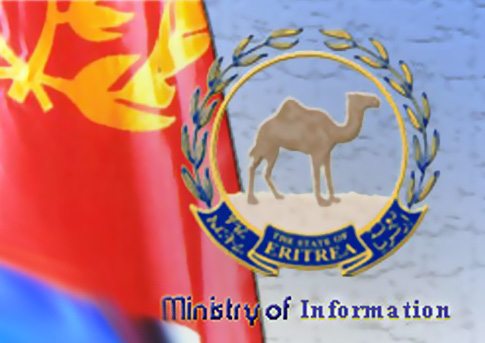Despite recent celebrations of its merger with al-Qaeda, Somalia’s Harakat al-Shabaab al-Mujahideen movement has been suffering from a power struggle in its leadership for the past two years. Though attempts have been made to conceal it, the rift is believed to have contributed to al-Shabaab’s loss of Mogadishu, the national capital, as well as other strategic towns in southern Somalia. Contributing to the cracks in the movement’s solidarity is the military pressure being applied against al-Shabaab on several fronts. This has led to a greater reliance on al-Qaeda style tactics such as the May 1 suicide bombing in Dusamareb that killed three Somali members of parliament (Reuters, May 1).
The ongoing rift between al-Shabaab official leader Shaykh Ahmed Abdi Godane “Abu Zubayr” and Shaykh Mukhtar Robow “Abu Mansur,” a senior commander and former spokesman of the group, has now been joined by Shaykh Hassan Dahir Aweys, a founder of Somalia’s Islamic movement and former leader of the now defunct independent Islamist movement Hizb al-Islam, which merged with al-Shabaab in December, 2010. Aweys, whose group was pressured to merge with al-Shabaab by Godane’s allies, now appears ready to back Abu Mansur should he make a bid for the group’s leadership.
The quarrel between the movement’s leaders became public earlier this year when American al-Shabaab member Omar Hammami (a.k.a. Abu Mansur al-Amriki) used a short online video clip on March 16 to express his fear that his life was in danger from other al-Shabaab members:
I record this message today because I feel that my life may be endangered by Harakat al-Shabaab al-Mujahideen due to some differences that occurred between us regarding matters of the Shari’a and matters of strategy. [1]
Al-Amriki, who was perhaps the best known al-Shabaab propagandist through his English-language statements and jihadi rap videos, provided no further details in his message, but Ahmed Abdi, a Nairobi-based political analyst, said al-Amriki had succeeded in revealing the hidden rift over ideological and strategy differences among al-Shabaab. [2]
Al-Shabaab’s press office turned to its Twitter account to deny that the group intended to cause any harm to al-Amriki: “HSM is surprised by the video of Abu Mansur al-Amriki that surfaced on the internet recently claiming that his life was ‘endangered’ by al-Shabaab.” [3] The group also pledged a formal investigation to verify the authenticity of the video and the motivations behind it. Only days later, Shaykh Abdirahman Hudeyfa, the newly-appointed governor of Juba region, confirmed that Omar Hammami had been detained at a Shabaab meeting near Kismayo for the purpose of investigation (SomaliaReport, March 19). Though unconfirmed reports circulated that Hammami had been beheaded on April 4 at the order of al-Shabaab’s Shaykh Ahmed Abdi Godane, he has since been seen in the Shabaab-held port town of Kismayo under heavy guard (SomaliaReport, April 19).
The leadership dispute was further inflamed when Shaykh Hassan Dahir Aweys used a Friday sermon on March 30 in the coastal town of Marka (100 km south of Mogadishu) to fearlessly attack al-Shabaab’s top leadership, accusing them of monopolizing jihad as well as globalizing the conflict by the merger with al-Qaeda. [4]
Aweys seemed to be particularly angered by a new al-Shabaab fatwa that banned the establishment of any new armed Islamic group or Islamic political party in Somalia as of March 26. Thefatwa appeared to be directed at preventing the formation of a new nationalist rebel group from the allied forces of Shaykh Hassan Dahir Aweys and Shaykh Mukhtar Robow “Abu Mansur.” The nationalist faction within the movement is trying to escape al-Shabaab’s current unpopularity and will be watching closely for a political opportunity to open up when the mandate of the Transitional Federal Government (TFG) expires in August, 2012. [5]
While acknowledging al-Shabaab’s well-known policy of assassinating anyone who becomes a threat to the group, Shaykh Aweys stated that all those in the Islamist movement had fallen silent due to fear of al-Shabaab’s wrath and called on al-Shabaab to “Stop the threats and assassinations of innocent Muslims in the name of Islam. The world has passed the age of threats.” However, al-Shabaab’s subsequent discovery of a major arms cache (including anti-tank missiles) in a former Hizb al-Islam stronghold seemed an ominous portent of future clashes between the Islamist factions. Though Aweys denied ownership of the weapons, he nonetheless urged al-Shabaab to return the weapons he described as Muslim property and promised to follow up on the issue until al-Shabaab provides an explanation of why the weapons were seized. Al-Shabaab’s military spokesman, Shaykh Abdul Aziz “Abu Musab” said any questions related to the weapon cache will be resolved by an Islamic court. Nevertheless, as the splits grow greater in al-Shabaab’s leadership, various factions in the movement may be preparing for an internal battle in which Shaykh Abdi Godane’s global jihadists will fight tooth and nail to suppress his rivals in any way possible.
Notes:
1. http://www.youtube.com/watch?v=7mvXeMwztYg , March 16, 2012.
2. Author’s interview with political analyst Ahmed Abdi, Nairobi, April 20, 2012.
3. https://twitter.com/#!/HSMPress, March 17, 2012.
4. Shaykh Hassan Dahir Aweys’ Friday sermon, Marka, March 30, 2012 http://www.somdaily.com/2012/04/01/xasan-daahir-oo-weerarray-al-shabaab-dhageyso/
5. Statement from Shaykh Ahmed Abdi Godane, March 26, 2012, www.raxanreeb.com/wp-content/uploads/Bayan-ham.pdf
************
* This article was published on RefWorld, titled ‘Al-Shabaab Split Threatens to Open New Conflict Between Somalia’s Islamists’, authored by Muhyadin Ahmed Roble, who is is a Nairobi-based analyst for the Jamestown Foundation’s Terrorism Monitor publication.
Check the Somalia archive for related posts.





